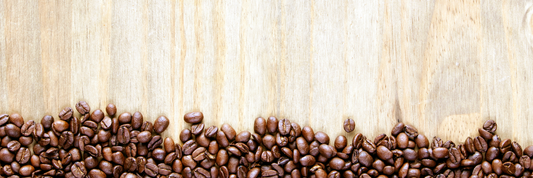Have you ever heard about rate of rise (RoR)? This article will explore the relevance of RoR to coffee shops, examining whether this metric is essential for their operations or if other factors hold more weight in delivering a quality coffee experience.
- Understanding the Brix Coffee: Definition, Importance, and Benefits
- Why Are Coffee Beans Oily? How To Dry Oily Coffee Beans?
- What Is Quaker Coffee Beans? How To Avoid Quaker Coffee Beans?
Understanding Rate of Rise (RoR)
What Is Rate of Rise (RoR)?
Rate of Rise (RoR) is a crucial metric in coffee roasting that measures the speed at which the temperature of the coffee bean increases during the roasting process. It essentially indicates how quickly the beans are absorbing heat from the roasting machine.
RoR is a critical factor for roasters in achieving their desired flavor profile. It provides valuable insights into the roasting process and helps roasters make adjustments to achieve consistency. By monitoring RoR, roasters can:
- Control the roast development: A higher RoR typically leads to a faster roast, while a lower RoR results in a slower roast.
- Prevent defects: Rapid temperature increases can cause uneven roasting or bean cracking, while excessively slow rates can lead to underdeveloped flavors.
- Achieve desired flavor characteristics: Different RoR profiles can influence the development of specific flavor compounds, such as acidity, sweetness, and bitterness.

The rate at which coffee beans heat up significantly impacts the chemical reactions that occur during roasting. These reactions determine the final flavor profile of the coffee.
- Fast RoR:
- Can lead to a lighter roast with higher acidity and brighter flavors.
- May result in a more pronounced green or grassy character if not controlled carefully.
- Slow RoR:
- Typically produces a darker roast with lower acidity and more pronounced sweetness and bitterness.
- Can contribute to the development of chocolatey and caramel notes.
How to Measure Rate of Rise?
Rate of Rise (RoR) is calculated by measuring the change in bean temperature over a specific period of time. Typically, this period is 30 or 60 seconds. Below are step by step to measure RoR.
Step 1: Temperature Measurement
Use a probe or sensor to measure the internal temperature of the coffee beans during the roasting process.
Ensure the probe is accurately placed to get a representative reading of the bean temperature.
Step 2: Time Intervals
Determine the desired time interval for measuring RoR. Common intervals are 30 or 60 seconds.
Step 3: Temperature Difference
Record the bean temperature at the beginning and end of the chosen time interval.
Calculate the difference in temperature between these two points.
Step 4: Calculation
Divide the temperature difference by the time interval to determine the RoR.
Example:
If the bean temperature increases by 15°C in 30 seconds, the RoR is 15°C / 30 seconds = 0.5°C/second.
Rate of Rise and Coffee Shops
While coffee shops don't measure RoR, its influence on bean quality indirectly affects their business. In this section, explore relationship between roaster and coffee shops and indirect impact of RoR on coffee shops.
Relationship between Roasters and Coffee Shops
While Rate of Rise (RoR) is a critical factor for coffee roasters in achieving desired flavor profiles, the direct relationship between RoR and coffee shops is often overlooked. Coffee shops primarily focus on brewing and serving coffee, rather than roasting the beans themselves.
However, a strong relationship between roasters and coffee shops is essential for ensuring consistent coffee quality. Roasters who understand and effectively manage RoR are more likely to produce coffee beans that meet the specific preferences of coffee shops. This collaboration can lead to long-term partnerships and mutual benefits.

Indirect impact of RoR on coffee shops (through bean quality)
While coffee shops are primarily concerned with brewing and serving coffee, the roasting process, including Rate of Rise (RoR), significantly influences the quality of the beans they receive. This indirect impact is crucial for maintaining consistency and satisfying customer preferences.
Bean Quality and Flavor Profile
- Flavor Development: RoR directly affects the development of flavor compounds within the coffee bean. A well-controlled RoR helps to extract the desired flavors, such as sweetness, acidity, and bitterness, while minimizing undesirable ones like burnt or ashy tastes.
- Consistency: Consistent RoR leads to more consistent bean quality. This is essential for coffee shops as it allows them to maintain a recognizable and reliable flavor profile across different batches.
Relationship with Roasters
- Collaboration: Coffee shops can work closely with roasters who prioritize RoR control. This collaboration allows for tailored bean profiles to match the shop's target customer base.
- Bean Selection: Understanding the impact of RoR on flavor can help coffee shops make informed decisions when selecting beans from different roasters.
- Quality Assurance: A strong relationship with a roaster who excels in RoR management can enhance the overall quality of the coffee served.
Customer Satisfaction
- Flavor Experience: Coffee brewed from beans roasted with optimal RoR tends to have a more balanced and complex flavor profile, leading to higher customer satisfaction.
- Consistency: Consistent flavor from batch to batch enhances customer loyalty and trust in the coffee shop.
Conclusion
While Rate of Rise (RoR) is crucial for roasting, its direct impact on coffee shops is limited. However, it significantly influences bean quality, which indirectly affects coffee shops. By partnering with roasters prioritizing RoR, coffee shops can improve their coffee offering and customer satisfaction. Ultimately, RoR is a vital factor in the coffee supply chain that benefits the end consumer.




